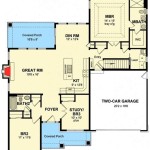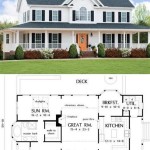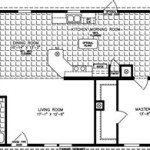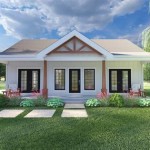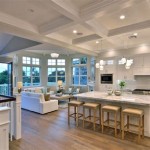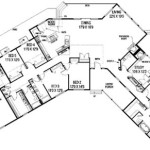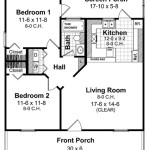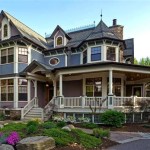Floor Plans With Keeping Rooms: Blending Tradition and Modern Living
The concept of a “keeping room” may evoke images of a bygone era, but its underlying principle – a comfortable, proximate space for family and close companionship – remains highly relevant in modern home design. Integrating a keeping room into a floor plan offers a unique blend of functionality and aesthetic appeal, creating a central hub for daily life that promotes connection and relaxation. This article explores the various aspects of floor plans incorporating keeping rooms, examining their historical context, functional benefits, design considerations, and suitability for diverse lifestyles.
Historically, the keeping room served as the heart of the home, particularly during the colder months. Positioned adjacent to the kitchen, often containing a fireplace or wood-burning stove, it provided warmth and a central gathering point for families. Activities such as cooking, sewing, ironing, and even sleeping often took place in this multi-purpose space. The keeping room was therefore intimately connected to the core functions of the household, offering both comfort and practicality. In essence, it was a space that fostered a sense of togetherness, especially crucial in pre-electricity era. The term "keeping room" itself suggested the room was being kept warm and functional.
Modern interpretations of the keeping room retain the core characteristics of warmth, connection, and proximity to the kitchen, but incorporate contemporary design elements and integrate seamlessly with open-concept living spaces. The room is usually designed with features that encourages family members to spend quality time together and engage in various relaxing activities. While the exact definition and use of a keeping room might slightly vary, the main focus never changes. A well-designed keeping room can significantly enhance the functionality and familial atmosphere of a home.
Key Point 1: Functionality and Benefits of a Keeping Room
The primary benefit of incorporating a keeping room into a floor plan lies in its versatility. This space serves as a flexible extension of the kitchen, accommodating activities beyond food preparation. It functions as a:
Relaxation Zone:
Equipped with comfortable seating, a fireplace, and perhaps a television, the keeping room provides a cozy retreat for relaxing, reading, or watching movies as a family.Informal Dining Area:
Adjacent to the kitchen, it offers a convenient space for casual meals, especially for families with young children or those preferring a less formal dining experience than in a dining room.Children's Play Area:
Supervision is made easier by the proximity to the kitchen. Parents can prepare meals while keeping a watchful eye on their children playing in the keeping room.Conversation Nook:
The intimate setting of the keeping room fosters meaningful conversations and strengthens family bonds.Home Office/Study Space:
A built-in desk or small table can transform a portion of the keeping room into a functional workspace, allowing parents to work remotely while remaining connected to the family activities.
Furthermore, a keeping room can improve the flow of traffic within the home, preventing congestion in the kitchen during meal preparation or social gatherings.
Beyond its functional advantages, a keeping room adds significant value to a home's aesthetic appeal. It introduces a sense of warmth and character, creating a welcoming environment that contributes to the overall ambiance of the living space. The architectural details, such as a fireplace, exposed beams, or built-in cabinetry, can further enhance the room's unique charm. The addition of a keeping room can increase a home's market value, attracting buyers who appreciate the combination of functionality and traditional design elements.
Key Point 2: Design Considerations for Integrating a Keeping Room
Successfully integrating a keeping room into a floor plan requires careful consideration of several design factors. These include size, location, connectivity, and style.
Size:
The optimal size of a keeping room depends on the overall dimensions of the house and the intended use of the space. A space that is too small will feel cramped and limit its functionality. A space that is too large will feel out of proportion to the kitchen and the rest of the house. As a general rule, the keeping room should be proportionate to the size of the kitchen and offer enough space for comfortable seating, a small table, and other desired furniture. It is important to avoid overwhelming the kitchen space.Location:
The keeping room should be strategically positioned adjacent to the kitchen, ideally with direct access through a wide doorway or archway. This close proximity ensures easy communication and supervision, allows for a natural flow of traffic, and facilitates the transfer of food and beverages. The adjacency to the kitchen is the defining feature, separating it from a formal living room or dining room.Connectivity:
Maintaining a visual and auditory connection between the kitchen and keeping room is crucial for fostering a sense of togetherness. Open layouts or large windows can help achieve this, allowing family members to interact even while engaging in different activities. Consider using similar flooring and paint colors in both spaces to create a cohesive look. The goal is to blur the line between the two rooms without completely merging them, preserving each space's distinct purpose.Style:
The aesthetic style of the keeping room should complement the overall design of the house, while also reflecting the personal preferences of the homeowners. Traditional architectural details, such as a fireplace, exposed beams, or built-in cabinetry, can enhance the room's charm. Modern keeping rooms may incorporate contemporary furnishings and clean lines, while still retaining a sense of warmth and comfort. Maintaining visual consistensy throughout the space creates an appealing look.Furthermore, consider the lighting needs of the keeping room. Natural light is always desirable, but supplemental lighting is essential for creating a cozy and inviting atmosphere. Layered lighting, including ambient, task, and accent lighting, can be used to create different moods and accommodate different activities. Dimmer switches allow for easy adjustments to the lighting levels.
Key Point 3: Suitability for Different Lifestyles
The suitability of a keeping room depends largely on the lifestyle and priorities of the homeowners. Families with young children often find a keeping room particularly beneficial, as it provides a safe and comfortable space for children to play within close proximity to the kitchen. Parents can easily supervise their children while preparing meals or engaging in other household tasks.
Empty-nesters or retirees may also appreciate a keeping room as a cozy and intimate space for relaxing, reading, or entertaining guests. The room provides a comfortable alternative to a formal living room and offers a convenient area for casual meals and conversation. Additionally, it can be a good place for relaxing during any time of day.
Individuals who work from home may find that a portion of the keeping room can be transformed into a functional workspace, allowing them to remain connected to family activities while still maintaining a productive work environment. A built-in desk or small table can provide a dedicated workspace, while the comfortable seating and natural light can create a more inviting and stimulating setting than a traditional home office.
However, a keeping room may not be suitable for all lifestyles. Individuals who prefer a formal and separate living space may find that the informality of a keeping room clashes with their design preferences. Those who rarely spend time in the kitchen or who prefer to eat meals in a separate dining room may not fully utilize the space. It's important to carefully evaluate one's lifestyle and needs before incorporating a keeping room into a floor plan.
In conclusion, integrating a keeping room into a floor plan combines modern living with time-honored traditions, creating spaces of comfort and connection. Thoughtful design, tailored to specific lifestyles, unlocks the keeping room's versatility, making it more than just an extra room. It becomes the heart where the family can grow closer.

Country Style House Plan 4 Beds Baths 4692 Sq Ft 952 240

3 Bed House Plan With Keeping Room And Split Layout 710352btz Architectural Designs Plans

House Plan 699 00208 European 5 896 Square Feet Bedrooms Bathrooms Keeping Room Plans Manor

Modern Farmhouse Plan 2 781 Square Feet 3 Bedrooms 5 Bathrooms 041 00274

4 Bed House Plan With Angled Keeping Room 710132btz Architectural Designs Plans

1 5 Story Modern Cottage House Plan W Hearth Room And Side

1 Story French Country House Plan Brendel

Beautiful 4 Bedroom Transitional Acadian House Plan With Keeping Room

Luxury European House Plan 3 Bdrm 4121 Sq Ft Home 153 1897
What Is A Keeping Room Ideas To Make It Yours Rocket Homes

